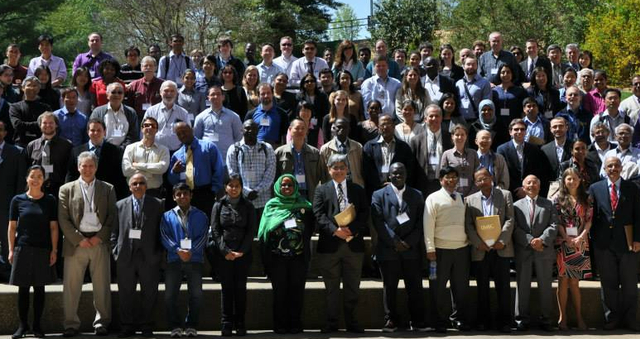


 A special feature of Probability and Statistics Day at UMBC 2014 is that the conference, including the workshop, is open to all statistics graduate students
from UMBC and local universites free of charge; however, REGISTRATION IS REQUIRED! The deadline to register is Friday,
April 11, 2014. // REGISTER NOW
A special feature of Probability and Statistics Day at UMBC 2014 is that the conference, including the workshop, is open to all statistics graduate students
from UMBC and local universites free of charge; however, REGISTRATION IS REQUIRED! The deadline to register is Friday,
April 11, 2014. // REGISTER NOW
For more information, contact any member of the organizing committee:
Bimal Sinha
Conference Chair
443.538.3012
Kofi Adragni
410.455.2406
Yvonne Huang
410.455.2422
Yaakov Malinovsky
410.455.2968
Thomas Mathew
410.455.2418
Nagaraj Neerchal
410.455.2437
DoHwan Park
410.455.2408
Junyong Park
410.455.2407
Anindya Roy
410.455.2435
Elizabeth Stanwyck
410.455.5731

Participant Information
Parichoy Pal Choudhury
Paper: Enhancing Genetic Case-Control Studies Using Sample Surveys
Genetic case-control studies are useful for characterizing the association between a gene and case-control status, the so-called primary phenotype. In these studies, it is common for investigators to collect additional health outcomes, referred to as secondary phenotypes. It is often natural to ask about the association between a gene of interest and a secondary phenotype. Since case-control data are not a random sample from the target population, the observed association of the gene and secondary phenotype may be biased. External information is required to correct for this bias. We propose a inferential framework for learning about the association between a gene and a secondary phenotype, utilizing information from a case-control and a representative sample survey from a target population. By way of illustration, we study the relationship between a candidate gene (linked to asthma) and obesity and how this relationship differs by ethnicity. We use data from the GALA II study (an asthma case control study in Latino American children) and the NHIS study (a national sample survey of children). Information from these two distinct data sources are combined to estimate standardized associations between the gene and obesity within ethnicity strata, which are then compared across the different ethnicities.